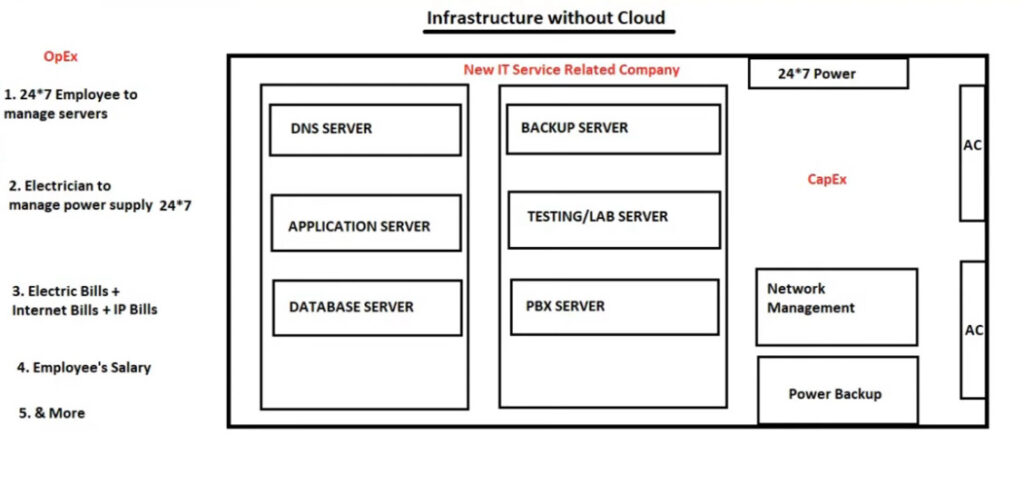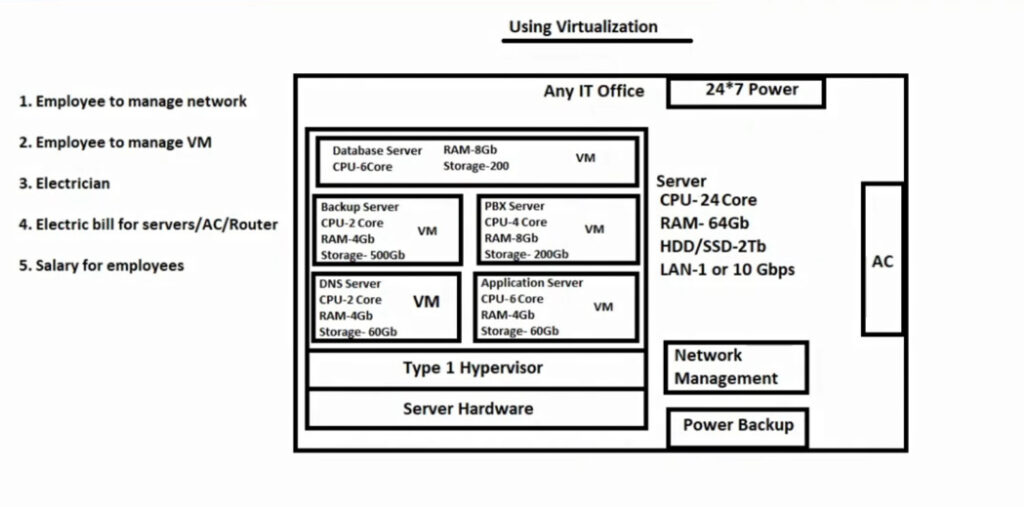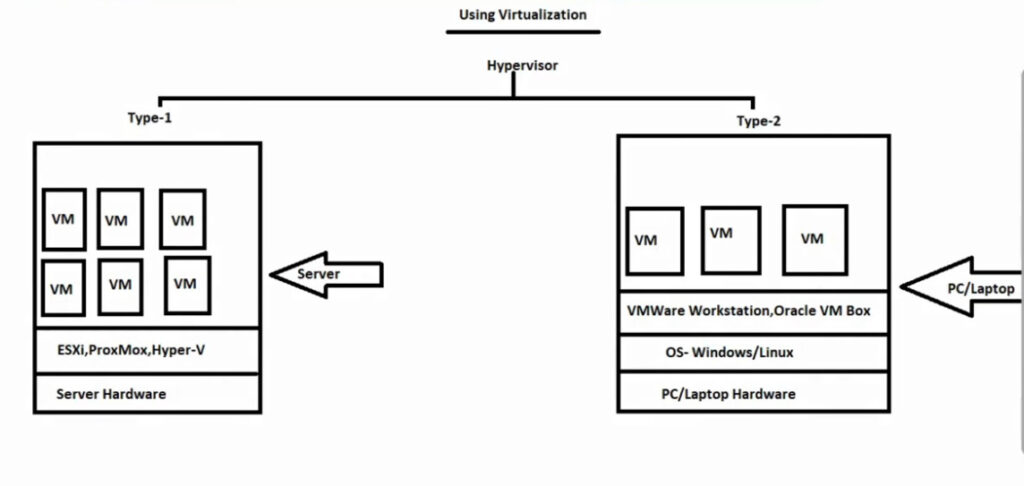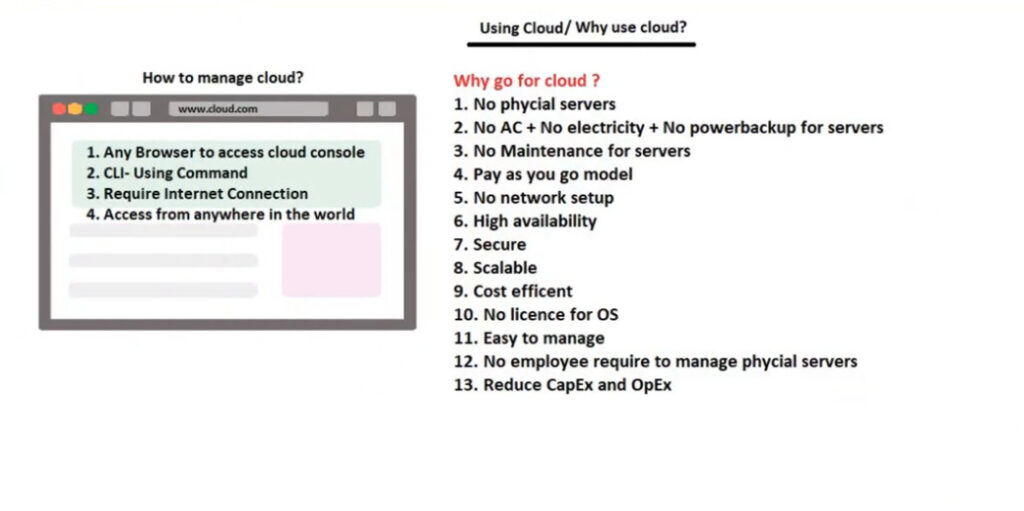What is Cloud Computing?
Cloud computing is the delivery of computing services (such as storage, processing power, networking, databases, and software) over the internet (“the cloud”). Instead of owning and maintaining physical servers and other infrastructure, organizations and individuals can access these resources as a service from cloud providers like Amazon Web Services (AWS), Microsoft Azure, or Google Cloud.
Cloud computing allows users to store, manage, and process data remotely, often on servers maintained by a cloud service provider, rather than using local data centers or personal computers. This model offers flexibility, scalability, and cost efficiency.
Key Characteristics of Cloud Computing:
On-Demand Self-Service:
- Users can provision and manage cloud resources (e.g., storage, computing power) on-demand without requiring human intervention from the service provider.
Broad Network Access:
- Cloud services are available over the internet and can be accessed from various devices like smartphones, tablets, laptops, and desktops.
Resource Pooling:
- Cloud providers use multi-tenant models to pool resources (e.g., storage, processing power) and serve multiple customers, which helps to optimize utilization and reduce costs.
Rapid Elasticity:
- Cloud resources can be quickly scaled up or down to meet changing demands. For example, if your website experiences a surge in traffic, cloud computing allows you to add more computing power instantly.
Measured Service (Pay-As-You-Go):
- Cloud services typically follow a pay-as-you-go or pay-for-what-you-use pricing model, meaning customers pay only for the resources they consume, rather than investing in expensive infrastructure upfront.
Types of Cloud Computing:
Public Cloud:
- Services are delivered over the public internet and shared across multiple organizations (tenants). Cloud providers like AWS, Microsoft Azure, and Google Cloud offer public cloud services.
- Examples: Amazon EC2, Microsoft Azure Compute, Google Cloud Storage.
Private Cloud:
- Cloud resources are used exclusively by one organization. Private clouds are typically used by businesses that require greater control over their environment or have specific regulatory requirements.
- Example: A company builds its own data center to run its private cloud services.
Hybrid Cloud:
- A combination of public and private cloud infrastructure, allowing data and applications to be shared between them. This model provides greater flexibility and optimization of existing infrastructure.
- Example: A company may keep sensitive data in a private cloud while utilizing public cloud resources for less sensitive workloads.
Deployment Models in Cloud Computing:
Infrastructure as a Service (IaaS):
- IaaS provides virtualized computing resources over the internet. It offers essential infrastructure components such as virtual machines, storage, and networking.
- Example services: Amazon EC2, Google Compute Engine, Microsoft Azure Virtual Machines.
Platform as a Service (PaaS):
- PaaS provides a platform that allows developers to build, deploy, and manage applications without worrying about the underlying hardware or software layers.
- Example services: Google App Engine, AWS Elastic Beanstalk, Microsoft Azure App Services.
Software as a Service (SaaS):
- SaaS delivers software applications over the internet on a subscription basis. These applications are hosted and managed by the provider, and users access them via a web browser or API.
- Example services: Google Workspace (Docs, Sheets), Salesforce, Microsoft 365.
Function as a Service (FaaS) / Serverless Computing:
- Serverless computing allows developers to build and run applications without managing servers. The cloud provider automatically handles the infrastructure.
- Example services: AWS Lambda, Google Cloud Functions, Azure Functions.
Advantages of Cloud Computing:
Cost Efficiency:
- No upfront capital costs: You only pay for what you use (e.g., storage, processing power).
- Eliminates the need for maintenance: Cloud providers manage the infrastructure, so businesses don’t have to worry about hardware maintenance.
Scalability and Flexibility:
- You can easily scale resources up or down to meet your needs. For instance, cloud computing allows you to instantly increase server capacity during peak traffic times and scale back when demand decreases.
Accessibility and Collaboration:
- Cloud services are accessible from anywhere with an internet connection, which facilitates remote work, collaboration, and access to data and applications from multiple devices.
Automatic Updates and Maintenance:
- Cloud providers handle software updates and system maintenance, ensuring your infrastructure is always up-to-date and secure.
Security and Disaster Recovery:
- Major cloud providers implement stringent security measures, including encryption and backup options. They also offer disaster recovery services to ensure business continuity in case of data loss or system failure.
Common Use Cases of Cloud Computing:
Data Storage and Backup:
- Cloud storage services like Amazon S3, Google Drive, or Microsoft OneDrive allow individuals and businesses to store data securely and access it from any device.
Web Hosting and Application Hosting:
- Hosting websites or web applications on cloud platforms such as AWS, Azure, or Google Cloud offers flexibility, reliability, and easy scaling.
Big Data Analytics:
- Cloud platforms offer data processing and analytics services (e.g., Amazon Redshift, Google BigQuery) to analyze large datasets for insights and decision-making.
Machine Learning and AI:
- Cloud providers offer machine learning platforms like AWS SageMaker, Google AI, and Microsoft Azure Machine Learning to build, train, and deploy machine learning models.
Disaster Recovery:
- Cloud platforms provide services for disaster recovery, allowing businesses to quickly restore data and applications after outages or failures.
Conclusion:
Cloud computing has transformed the way businesses and individuals access and manage computing resources. By using the cloud, users can enjoy flexible, scalable, and cost-effective solutions for a wide range of computing needs, from basic data storage to complex machine learning applications. Cloud computing reduces the need for expensive on-premises hardware, offers high availability, and provides access to a wide range of advanced technologies, making it an essential part of modern IT infrastructure.




